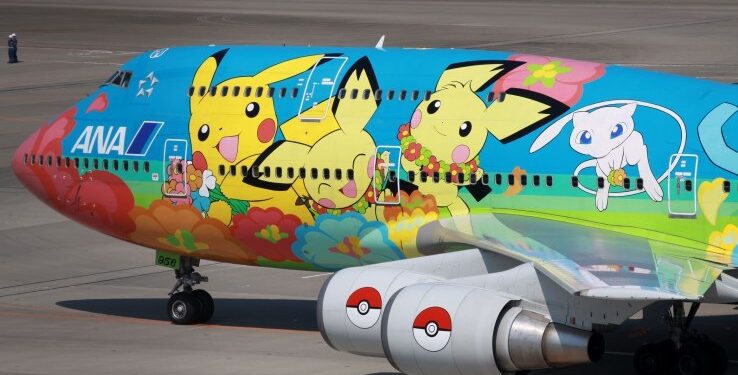Less than a week ago, a franchise that you probably assumed dead was given a boost of life by finding a place in the pockets (and hearts) of millions of people across the world. Pokémon GO, an augmented reality game and mobile app based on the beloved Nintendo series, has become a viral sensation and innovative marketers with a keen eye can take some big lessons from this surprise hit to both gain in the short term and evolve themselves to be better prepared when the next big thing comes along.
Here are four such notes to consider.
1. Brand Can Make All the Difference
If you’re a fan Pokémon GO, imagine this: what if there was a mobile game that offered a similar augmented reality experience, had a compelling plot with an evolving story, GPS-based integration, and team-based interactivity. Sounds like the perfect successor, right?
Turns out, that game already exists – and has for several years. In fact, if you’ve purchased a new Android device in that timeframe then odds are good it came preloaded with the app, Ingress, because it was originally developed by Google-owned software developer Niantic.
Funnily enough, Niantic also helped The Pokemon Company develop the far more successful Pokémon GO, even though by most accounts it has fewer features, less interactivity, and less content.
The difference lies in the brand. Ingress had to build an image from the ground up, and even with the help of Google, it struggled to sell its relatively intense sci-fi experience to casual smartphone users. The Head of Niantic Labs, John Hanke, told Mic last year that the game had about a million active players worldwide. By comparison, Pokémon GO’s approachable brand and familiar faces like Pikachu have drawn 7.5 million downloads and counting in the U.S. alone, according to app analytics center SensorTower.
As in all things, branding matters and the use of a strong, relatable brand can help you better connect with audiences.
2. Riding the Coattails of Others
And while few brands can enjoy the same recognition and affiliation as Pokemon, businesses of all kinds are hopping on the Pokémon GO bandwagon, with many seeing great success.
The app incentivizes users to get out in their communities and walk around at times and places they normally wouldn’t, and that’s especially good news for local businesses, brick-and-mortar shops and restaurants who’re suddenly seeing an influx of random passers-by searching for a rare Pokémon or competing for control over a territory. Individuals and organizations can even pay a small fee to make a given location a Pokémon hunting hotspot for a short period of time.
The web is now awash with clever sidewalk signs advertising their rich hunting grounds. It’s easy to imagine how you might entice hot, thirsty Pokémon Masters walking by with a cold drink, or offer them some kind of merchandise that could enhance their experience catching ‘em all.
Even churches and other religious institutions have shown to be common destinations for “gyms” and Pokémon themselves, and some of them have seen the influx of traffic as an opportunity to show their hospitality and share their message.
3. Consumers are More Open to AR Experiences than We Thought
Despite the seeming endless potential of augmented reality, the technology hadn’t seen significant uptake or adoption til very recently. In fact, tepid responses to other AR apps and devices have left some in the tech community wondering if there really was any true demand for this kind of experience from your average consumer.
It turns out there is – if you can package it in an approachable, fun, and user-friendly fashion.
Snapchat’s recently demonstrated this with the success of its interactive lenses, and now Pokémon GO has provided another example of success.
If you were ready to dismiss AR as a marketing channel and move on to the next big thing, it might be time to reconsider your stance.
4. Nostalgia Can Overcome Generational Barriers
I distinctly remember living through the zenith of Poke-fever. I had the playing cards, I played the games, I got up early on Saturdays to watch the cartoon and engaged in vicious fantasy battles with my brothers and our toys.
I was seven. That was twenty years ago. Yet two decades later, many of my peers are just as crazy for Pokémon GO as any children today.
The guy who rolled my burrito for lunch earlier was just telling me about the Eevee that was out in the parking lot earlier. Even my best friend, who wasn’t particularly into Pokémon when she was a child, is now constantly wandering off to find a nearby creature or Pokéstop (much to the chagrin of her dog who has to follow along in the Atlanta heat).
If only he could evolve, too.
As content marketing has quickly matured from a creative experiment to a disciplined science, marketers are often told to specifically design and customize their offerings for various target audiences and personas. But while Pokémon as a concept has almost always been oriented to children, there remain several generations of people who have grown up with the critters and their accompanying media. In fact, it seems a hit across many demographics: age, gender, economic status, geographic location and more.
If you have a great product, you can use it to unite people rather than divide them into buckets of data points.
SocialMediaToday.com
4 Lessons to Take from the Explosion of Pokémon GO
ADVERTISEMENT







